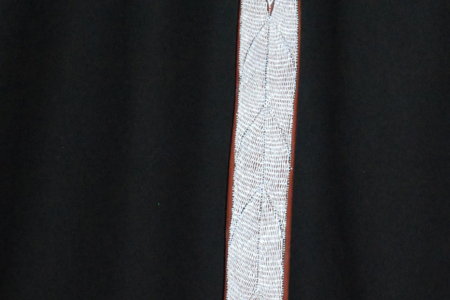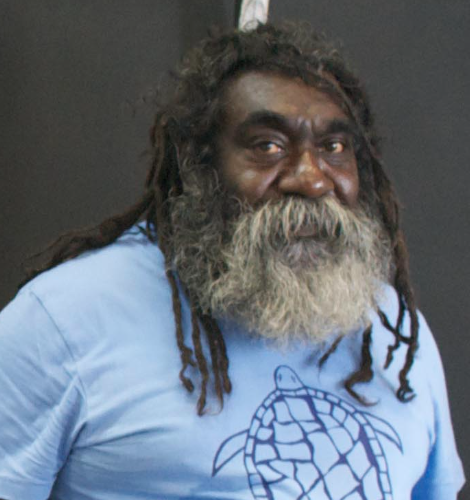
Yawkyawk

Originally from Arnhem Land (northern coast of Australia), Aboriginal artist Owen Yalandja belongs to the Maningrida community specializing in woodworking – an activity characteristic of this maritime region where the presence of vast tropical forests makes it natural the creation of sculptures (totem poles, ritual objects) and paintings on bark. Owen Yalandja represents Mimi Spirits, protectors of the coasts, representations of which are almost 20,000 years old on the walls of caves. Known to inhabit the crevices of the coast, the Mimi Spirits are characterized by a slenderness that borders on fragility: according to tradition, a gust of wind that is a little too strong can break their bones and the slender shapes of the sculpture reflect this characteristic well. which is further underlined by the curve of the trunk used by the artist. Among the Mimi Spirits, the Yawk Yawk occupy a special place: they are young girls quite similar to our mermaids who, in Dreamtime, left the waters where they lived to go to dry land to look for their food. The work also quite precisely evokes the double anthropomorphic and fish dimension of the Yawk Yawk: it seems, in fact, to capture it at the moment when its caudal fins transform into legs. The verticality of the sculpture also emphasizes this aspect of the myth. The head (which is reminiscent of a ritual mask and gives the entire work the hieratic appearance of a totem) and the body are decorated using techniques used in bark paintings - specific to Arnhem Land: motifs in dotted lines (for the upper part of the sculpture) which also recall the body paints with which the aborigines cover themselves to celebrate the Mimi Spirits; traced using the technique known as "X-rays" (for the lower part) which shows the interior of the mermaid and more particularly the edges which serve as its bones.
Collections: •Musée des Confluences, Lyon, France / Musée d’ethnographie de Genève (MEG), Geneva, Switzerland/ National Gallery of Australia, Canberra/ Australian Museum, Sydney/ Museum and Art Gallery of the Northern Territory, Darwin/ National Gallery of Victoria, Melbourne/ Art Gallery of South Australia, Adélaïde/ Musée d’Art Aborigène, Utrecht, Pays-Bas/ The Kluge Foundation, Morven Estate, Charlottesville, Virginia, Etats-Unis/ Art Gallery of New South Wales, Sydney/ Queensland Art Gallery, Brisbane/ Artbank, Sydney/ Laverty Collection, Sydney/ Gantner Myer Collection, Etats-Unis